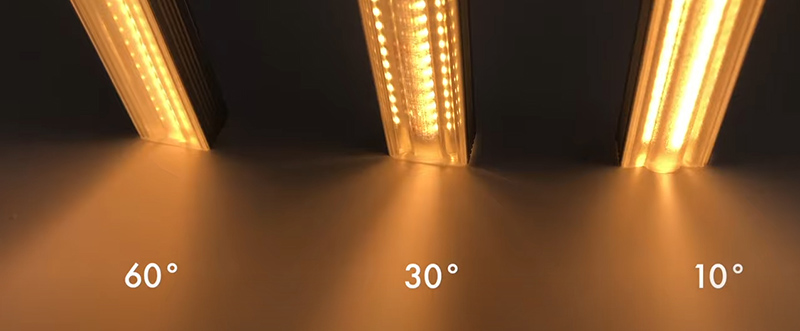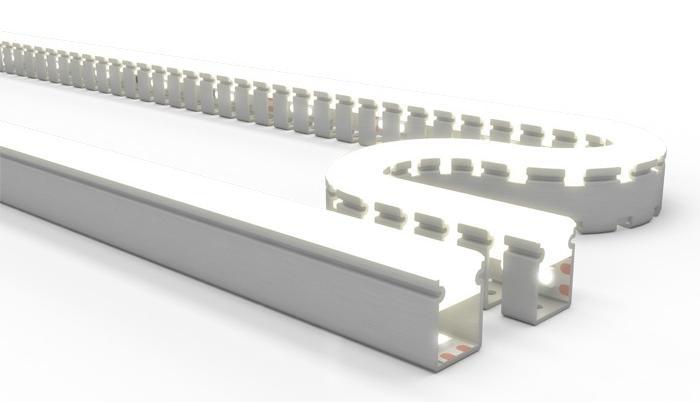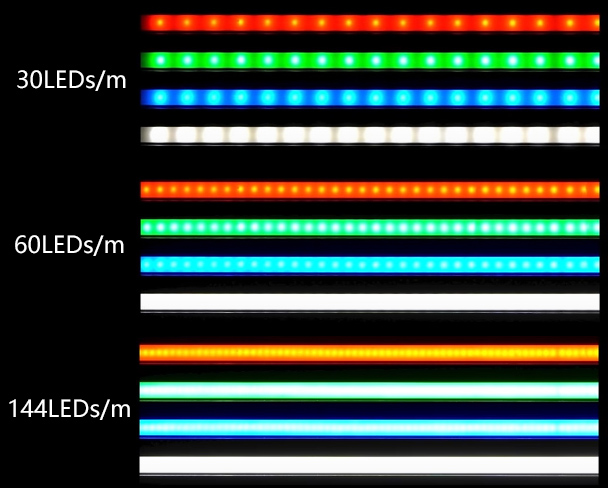
LED diffuser provides a uniform light diffusion effect for LED strip lights. Place the led strip lighting in the aluminum channel, the channel depth, the led diffuser type, and the LED density are all closely related to the LED diffusion effect.
How to achieve your ideal diffusion effect by choosing the right LED channel, LED diffuser, and LED strip density? Keep reading to get your answer.
What Can I Use To Diffuse LED Strip Lights?
LED channels are well known to users for their ability to protect led strips and create linear lighting. The led strip lighting in the LED channel is diffused through the LED diffuser, so the selection of the LED diffuser is vital.
It should be noted that the more uniform the LED light diffusion, the lower the brightness will be. But don’t worry about the problem of insufficient brightness, because LED is a strong point light source with high brightness, and glare often occurs when human eyes look directly at the LED light for too long.
1.1 Aluminum Channel With Transparent LED Diffuser
The transparent LED strip diffuser (clear diffuser) can allow the LED light to pass through to the greatest extent (less brightness loss), with high transparency and good light transmittance.
The downside is that the LED diffuser doesn’t hide the LED strip, and you can see the light spot quite clearly.

1.2 Aluminum Channel With Milky White LED Diffuser
The milky white LED diffuser (opal matte LED diffuser) has strong shading and can achieve a uniform light diffusion effect. And it can hide the LED light strips, so as to achieve the effect of seeing the light but not the fixture.

1.3 Translucent LED Diffuser
The translucent diffuser is also known as the frosted diffuser. Its light diffusion effect is located between the transparent diffuser and the milky white diffuser, and the light source can be seen while obtaining a uniform light effect.

1.4 Black LED Diffuser
The black aluminum led channel series will be specially equipped with a black led diffuser cover, which is a great linear light fixture used for decorative lighting.
Compared with other LED strip diffusers, the LED light loss is the most. It is the LED diffuser with the lowest brightness. So it is suitable for auxiliary lighting, but not suitable for the main lighting.

1.5 Transparent Lens LED Diffuser
The transparent diffuser of the lens series led aluminum channel concentrates the LED light at an angle of 10°, 30°, or 60°, which is suitable for accent lighting, and the sight is concentrated on a certain object or a certain area. The lens led diffuser can also see the light fixture.

1.6 Silicone LED Diffuser
The flexible led channel with silicone diffuser can be bent in S-shape or C-shape, which is suitable for curved path lighting installation. And the silicone led diffuser has good light transmittance.

How To Diffuse LED Strip Lights?
In addition to the LED diffuser type, the following points need to be considered that will affect the diffusing effect.
2.1 Shallow Channel vs Deep Channel
A deep led channel and a shallow led channel bring different light effects to the same led light strip. Since the led strip light is far from the led diffuser in the deep aluminum channel, the LED light will diffuse more evenly.

2.2 Flat Diffuser vs Curved Diffuser
What is the light effect of different shapes of LED strip diffusers? The light effect of the curved led diffuse is more uniformly than the flat led diffuser, it has a larger light diffusion area and a wider irradiation range.

2.3 Choose The Right LED Strip Density
For the same led diffuser, the use of different densities of led light strips appears different in the final light effect. The denser the led strip density, the smaller the LED spot, and the more linear the LED light.

3. In Conclusion
If you want to use led aluminum profiles combined with led strip lights to form a dotless effect, you need to choose the appropriate light strip density, led strip diffuser cover, and a certain height of the led channel. LED strip densities of 60, 120, or 144 are suitable for creating linear light.